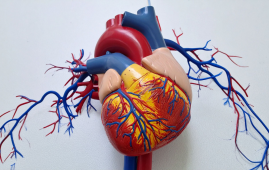

Scientists from Johns Hopkins University School of Medicine and the National Institutes of Health have discovered a protein in mice’s visual system that appears to be important for regulating the body’s circadian rhythm by buffering the brain’s response to light. According to the study authors, the finding, published on December 5 in PLoS Biology, boosts attempts to better treat sleep problems and jet lag.
“If circadian rhythms adjusted to every rapid change in illumination, say an eclipse or a very dark and rainy day, they would not be very effective in regulating such periodic behaviors as sleep and hunger. The protein we identified helps wire the brain during neural development to allow for stable responses to circadian rhythm challenges from day to day,” says Alex Kolodkin, Ph.D., professor in the Johns Hopkins Department of Neuroscience and deputy director for the Institute for Basic Biomedical Sciences.
Kolodkin co-led the study with Samer Hattar, Ph.D., chief of the National Institute of Mental Health’s Section on Light and Circadian Rhythms.
Most living things have a circadian “clock,” which is a series of biological rhythms that work on a 24-hour cycle and regulate alertness, tiredness, appetite, and body temperature, among other cyclic activities.
Disrupting this system, for example, through shift work or long-distance travel across numerous time and light zones in humans, can have serious repercussions. Previous research has linked persistent disruptions in circadian rhythm to an increased risk of cancer, depression, and a variety of other medical issues.
Circadian systems are fundamentally “trained” by light exposure. Although researchers have made tremendous progress in understanding the mechanics underlying circadian rhythms over the last few decades, it is still unclear how the brain becomes wired for them.
Kolodkin and Hattar, together with research first authors John Hunyara and Kat Daly and their colleagues, searched a database for biological compounds present during development in the suprachiasmatic nucleus (SCN), the mouse brain’s regulatory center for circadian rhythms.
The SCN is located deep within the hypothalamus of both the mouse and human brains and connects with brain cells that lead to the retina, the light-sensing component of the eye.
The study team rapidly focused in on teneurin-3 (Tenm3), a cell surface protein that is part of a larger family of proteins that play important roles in the visual system circuit formation and, more broadly, in other central nervous system circuits.
as the researchers genetically engineered mice to block Tenm3 production, the animals formed less connections between the retina and the SCN as compared to Tenm3-intact mice. However, animals lacking Tenm3 developed significantly higher connection between cells in the core and shell of the SCN, where Tenm3 is found.
The scientists devised a series of studies to see whether Tenm3 could maintain circadian rhythms or cause them to be disrupted by even a small amount of light.
They began by training mice missing Tenm3 on a 12-hour light/dark cycle, then advanced the dark period by six hours. It took around four days for mice with intact Tenm3 to re-adjust their circadian rhythms to the shift, as judged by activity patterns typical of normal sleep cycles. The animals who did not have Tenm3 acclimated much faster, in roughly half the time.
When the researchers repeated the experiment with light twice as dim as in the previous test, it took the mice with Tenm3 around eight days to reset their circadian cycles, whereas the mice without Tenm3 only took about four days.
Even a 15-minute pulse of weak light induced the Tenm3-lacking mice to release a brain chemical that acts as a surrogate for light exposure, implying a heightened sensitivity to light signals required for setting or resetting the circadian clock.
The authors believe that Tenm3 helps wiring the brain to maintain consistent circadian rhythms even when light exposure is varied. Researchers may someday be able to diagnose and treat errors that contribute to insomnia and other sleep disorders in people by knowing more about this system and Tenm3’s involvement, according to Hattar, or possibly develop therapies for jet lag.
“There are very clear implications for human health,” he said.
For more information: Teneurin-3 regulates the generation of non-image-forming visual circuitry and responsiveness to light in the suprachiasmatic nucleus, PLOS Biology, https://doi.org/10.1371/journal.pbio.3002412
more recommended stories
 How the Uterus Senses Force During Labor: New Insights
How the Uterus Senses Force During Labor: New InsightsA new study published in Science.
 Fat-Free Mass and Brain Outcomes in Preterm Babies
Fat-Free Mass and Brain Outcomes in Preterm BabiesEarly Fat-Free Mass May Hold the.
 How Hormones Shape Dopamine-Driven Learning
How Hormones Shape Dopamine-Driven LearningNYU Study on Hormones and Cognitive.
 Protein Pair Guides Chromosome Alignment in Mitosis
Protein Pair Guides Chromosome Alignment in MitosisKey Points A joint research team.
 Intensive mind-body retreat rapidly alters brain function
Intensive mind-body retreat rapidly alters brain functionAn intensive mind-body retreat combining meditation,.
 Citrus and Grape Compounds Help Prevent Type 2 Diabetes
Citrus and Grape Compounds Help Prevent Type 2 DiabetesA new clinical trial highlights the.
 Personalized Pain Care Transforms Parkinson’s Treatment
Personalized Pain Care Transforms Parkinson’s TreatmentNew UniSA research underscores the urgent.
 Genetic Diversity Explains Obesity Risk Differences
Genetic Diversity Explains Obesity Risk DifferencesCross-ancestry Study Identifies Novel Obesity Genes.
 Meniscal Tear and OA Pain Improved by Home Exercise
Meniscal Tear and OA Pain Improved by Home ExerciseHome Exercise Proves Effective for Knee.
 AI ECG Model Outperforms Standard STEMI Triage
AI ECG Model Outperforms Standard STEMI TriageNovel AI ECG Model Outperforms Standard.

Leave a Comment